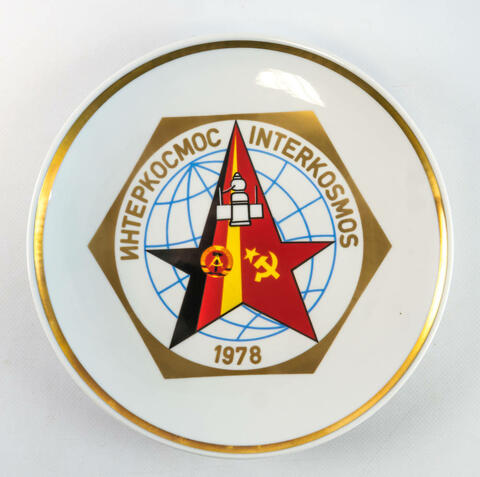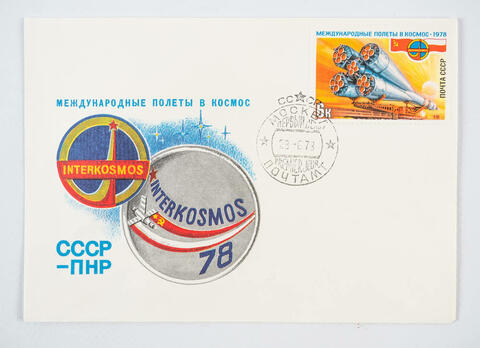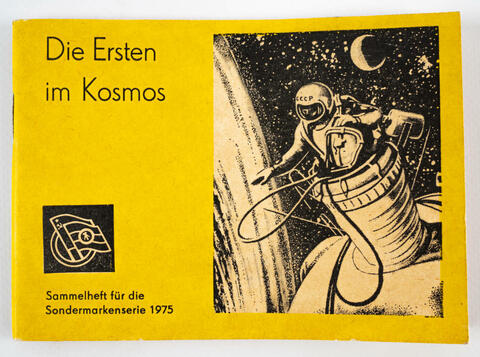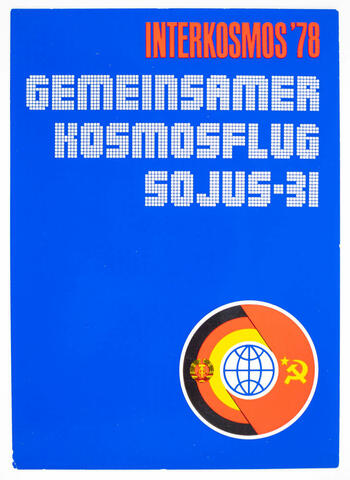History
Reaching for the Stars: The »Interkosmos« Programme of the Eastern Bloc
In the 1950s and 1960s, the two superpowers, the USA and the Soviet Union, engaged in a space race. This phase, in the middle of the heyday of the Cold War, began with the successful launch of the Soviet »Sputnik« in 1957 and ended with the moon landing of the American spacecraft »Apollo 11« in 1969. The respective successes were exploited by both sides for propaganda purposes, and the technical know-how gained further fuelled the arms race of the superpowers.
The introduction of the Soviet Union's »Interkosmos« Programme
In order to intensify scientific research and to integrate friendly nations into its own space programme, the Soviet Union initiated the »Interkosmos Programme«. As early as 1967, an »Agreement on Participation in the Exploration and Use of Outer Space by Means of Artificial Earth Satellites for Peaceful Purposes« was concluded between the Soviet Union and friendly socialist countries. This agreement was also intended to enable other nations to launch their own space travellers into space. In the programme, the Soviet Union provided the proven launch technology for the flight into space, while the other participating countries had to develop and provide their own equipment, measuring instruments and facilities for research purposes.
Sigmund Jähn 1978 as the first German in space
In November 1976, Lieutenant Colonel Sigmund Jähn, a military pilot of the National People's Army (NVA), was selected for cosmonaut training in the Star City near Moscow. After an intensive preparation and training phase lasting several years, the time had come on 26 August 1978. At 4.51 pm and 30 seconds German time, »Soyuz 31« lifted off with the Soviet cosmonauts Valeri Bykovsky and the East German Sigmund Jähn from the Baikonur spaceport in the Kazakh steppe. The spacecraft's destination was the Soviet orbital station »Salyut 6«, predecessor of the Soviet space station »Mir« and today's international space station »ISS«. Once there, Jahn conducted numerous scientific experiments under cosmic conditions. Among other things, during his time on the orbital station he operated the »MKF 6«, a multi-spectral camera developed by the Carl Zeiss Jena combine, which was considered the best space camera at the time. After a total of 7 days, 20 hours, 49 minutes and 4 seconds, Bykowski and Jähn landed back on Earth in their space capsule.
After his return, Jähn became a state hero in the GDR
The East German media reported extensively on the first space flight by a German. The launch of the »Soyuz« spacecraft was broadcast on television and the daily newspaper »Neues Deutschland« ran the headline on 27 August 1978: »The first German in space, a citizen of the GDR«. After his return to the GDR, Sigmund Jähn was celebrated like a state hero, promoted to colonel and received the award »Hero of the GDR«. In the years that followed, numerous schools and leisure centres were named after Jähn.
Numerous collection items on the subject of Sigmund Jähn
Our collection includes a press folder on the joint space flight as part of the »Interkosmos« project. It contains various postcards, some with Jähn's signature, pins with the »Interkosmos« logo, press articles on the subject as well as printed summary press information. The folder itself is made of plastic and was compiled by the Berlin Press Centre. Furthermore, there are pins and badges as well as stamps and envelopes in the collection of the DDR Museum. All inventoried objects on the subject of »Interkosmos« can be discovered in the free object database.
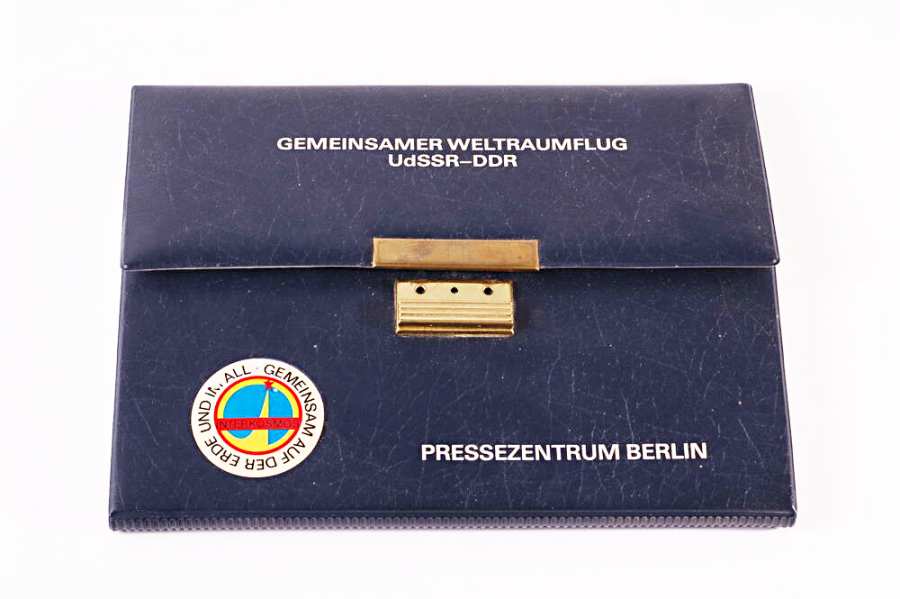
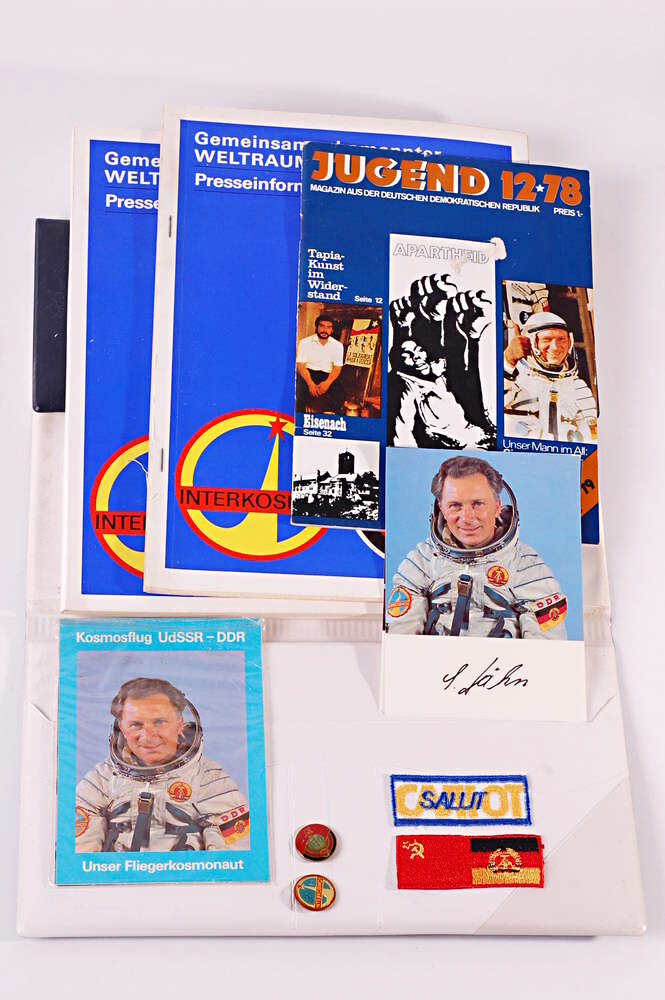
What's next: The future of space exploration
With the end of the Cold War and the collapse of the Soviet Union, cooperation in space also changed. Since 1998, the International Space Station (»ISS«) has been orbiting the Earth at an altitude of 400 kilometres. A total of 15 nations participate in the »ISS« and continue to build it up. Nowadays, extensive research projects are planned and implemented in cooperation. There are ambitious plans for the future to explore Mars and other planets.
Editor's note: The article first appeared on 27 August 2015.
